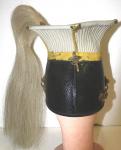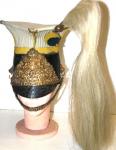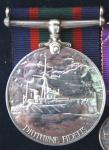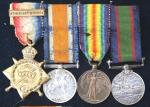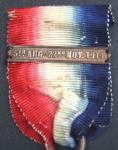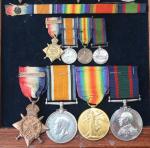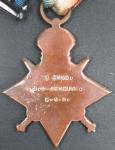-
Posts
13,225 -
Joined
-
Last visited
-
Days Won
22
Content Type
Profiles
Forums
Blogs
Gallery
Events
Store
Everything posted by Mervyn Mitton
-
-
The medieval Polish Knights and horsemen were some of the most skilled in Europe. They were quite ferocious in battle and it was they - who turned the Ottoman troops back from the gates of Vienna. During the Napoleonic Wars their Lancer Regiments were seized on by Napoleon and were integrated into the French Army. They were very effective as no-one wanted to face a 3 metre (9 feet) Lance. This came to a head at the Battle of Waterloo in 1815. The British Heavy Cavalry charged the French guns - quite succesfully, however during their retreat to the British Lines Napoleon sent the Uhlans after the British. Our heavy equipment and thick mud brough many casualties from the lances and one of our most famous Regiments - The Royal Scots Greys - were nearly wiped out. This brought changes in the British Army and a number of our light cavalry regiments were converted into Lancers. Therefore the history for British Lancer Regiments only commences from 1815. The Polish uniform with the breast plastron was copied - as was the Polish Uhlans Tschapka. We still have some Lancer Regts. - but outside of Ceremonial duties they drive tanks. This Tschapka is for the 17th Lancers - a very famous Regiment - it dates to the 1879 period when they fought against the Zulus. I am told the yellow band should be blue , but I don't want to touch it as it is quite fragile. The last Battle Honour on the helmet plate is for South Africa 1879. So, a living testimony to the bravery and battle skills of the old Polish horsemen. CLICK PICTURES TO ENLARGE)
-
No Chris - we don't even know how Jenkins (the Naval Eng.) came to have them. He was probably guarding something? Thankyou for comments - I think it is a good group with lots of history - if he survived without being wounded he was very lucky. I think I'll hang-on to it for the present - however, a Strathcona's Horse would probably do the trick................
-
The Miniature Group - from the look of it he had the Star gilded. Note, on the ribbon there is an additional medal - The Africa Service Medal. He must have moved to South Africa and during WW2 did Defence Duty. I think it has become lost, simply because he never bothered to have it mounted on his group - probably didn't want to disturb them ?
-
I must be honest and say that until I purchased this Group, I was not aware that Naval personnel were eligible to receive the famous MONS Star. This was awarded only for Service between August 5 - 22nd. Nov. 1914. Basically it was for members of our expeditionary Force sent to help defend Belgium. The Battles of Mons and Ypres saw severe casualities - however, our smaller Army held the Germans and we were able regroup and broke out from the lines in 1915 with the Battle of Loos. To be awarded the clasp and the ribbon rosette, the soldier had to have been under enemy fire and engagement. This superb group - with it's Long Service and Good Conduct Medal to the Royal Naval Volunteer Reserve - came with the Engineer Officer's group - and no-one has any ides of who Smith was - or, where the medals came from. However, it is quite common for old servicemen to leave their medals to former friends and colleagues - and, I think this could be the case here. I will find out and let you know. The Royal Naval Reserve was established in 1863 for serving members of the Merchant Navy. The Royal Naval Volunteer Reserve came about in 1903. Leading Seaman A.N.Smith had been in the RNVR prior to WW1 as his min. 1914 Star has been privately named and shows that he was attached to the Clyde Division - which is in Scotland. When War broke out Britain's various Reserves were recalled to the Colours - however, there were immediate problems for the Navy. There were between 20 and 30,000 excess men for whom no places on the ships were available. The First Lord of the Admiralty - a Civilian appointment - was Winston Churchill and he decided that these men whould be put into uniform - formed into Naval Battalions and be sent to France to fight as soldiers. This must have been a terrible shock to men trained as seamen - but the decision was typical of Churchill. He sent untold numbers of men to their deaths because he always thought he was right. The Naval personnel were formed into 8 Bns. - each named after a famous Admiral - Smith was in Hood Bn.. Their were enough men to form 3 Brigades and a 4th. was made-up from the Royal Marines. The unit name was : British 63rd. (Royal Naval) Division. They fought in their own uniforms - at first, had no proper equipment and were sent off to Belgium. They tookpart in the Defence of Antwerp and when forced to retreat 1500 men fled into Holland - which was neutral - and were interned. The Division saw service in Egypt - fought at Gallipoli - Greece - The Dardenelles. Severe casualties had reduced the number of sailors and in July 1916 it was re-named as the 63rd. Division and fought on the Western Front in France for the balance of the War.
-

WW1 & WW2 Naval Group
Mervyn Mitton replied to Mervyn Mitton's topic in Great Britain: Orders, Gallantry, Campaign Medals
These are also shown under Documents with the comments. They obviously go with the medals , so I am re-posting here. -

WW1 & WW2 Naval Group
Mervyn Mitton replied to Mervyn Mitton's topic in Great Britain: Orders, Gallantry, Campaign Medals
-

WW1 & WW2 Naval Group
Mervyn Mitton replied to Mervyn Mitton's topic in Great Britain: Orders, Gallantry, Campaign Medals
-

WW1 & WW2 Naval Group
Mervyn Mitton replied to Mervyn Mitton's topic in Great Britain: Orders, Gallantry, Campaign Medals
-

WW1 & WW2 Naval Group
Mervyn Mitton replied to Mervyn Mitton's topic in Great Britain: Orders, Gallantry, Campaign Medals
The Group reverse. The medals have been badly stored and the front ribbons showsigns ofe silverfish damage. I have had the silver medals cleaned - they were so dirty. -
**Remember to click on pictures to enlarge** This fairly ordinary medal group has an interesting background. Firstly the trio is present for the First World War - from the naming on the 1914-15 Star we see that he is shown as 3rd Engineer. For the War medal he is shown as Engr.S.Lt. (Engineer Sub-Lieutenant). This group came with the shoulder boards for a Merchant Navy Engineering Officer - I had thought they were medical, but a number of our experts soon corrected me - see the post under Badges. I have to arrange for his papers to be drawn and then we will find out his Service details - I will keep you up-dated. Since he was Royal Naval Reserve, he must have left the Merchant fleet and re-joined at the beginning of WW2. With the Atlantic Star he was certainly at sea.
-
Mike - makes very interesting reading. I recognise many left wingers in the list - they should not have been offered them in the first place. The Military refusals seem strange until you look at the level of the Award - a Brigadier must feel slighted to be given an MBE or, OBE. Also, several titled people turned down the CBE's. I also saw that several turned down Knighthoods - possibly not wanted in their line of work. Only one Baronetcy refused - this is the lowest hereditary honour and gives the title 'Sir'.
-

Turkey Korean War Turkish Troops outfit and badges
Mervyn Mitton replied to demir's topic in Türkiye
Hi - Guys. We have a guest - on the Guest info. and valuation Forum - asking for help on the Turkish units in the Korean War. Should anyone be able to help him we will be most grateful. Mervyn. -

Royal Fusiliers member
Mervyn Mitton replied to Spasm's topic in Great Britain: Research, Documentation & History
Steve - what date was he killed ? I'm very surprised that a Death Plaque was issued. Contact Hampshire Police HQ I think they are in Winchester now. Southampton, at the time of his death was an independent Borough Police Force - however, I expect all of their records were transferred to HQ on amalgamation. There may well be additional information on file. Mervyn



